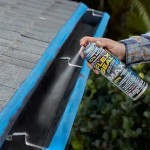How to Effectively Eradicate Radon from Your Basement
If you're a homeowner, it's crucial to be aware of radon and its potential health risks. Radon is a colorless, odorless, and radioactive gas that can cause lung cancer. It seeps into homes from the ground and can accumulate in basements, which have poor airflow and are often enclosed spaces.
If you're concerned about radon in your basement, there are a few steps you can take to mitigate its presence:
1. Test for Radon
The first step is to test for radon. You can purchase a home radon test kit at your local hardware store or online. Follow the instructions in the kit to collect a sample of air from your basement. The kit will then be sent to a lab for analysis.
2. Fix Leaks and Cracks
Radon can enter your basement through cracks and leaks in the foundation, walls, and floors. Seal any cracks or leaks with caulk, expanding foam, or weatherstripping. You'll also want to inspect your sump pump and make sure it is working properly.
3. Ventilate Your Basement
Good ventilation is key to reducing radon levels in your basement. Open windows and doors as often as possible to allow fresh air to circulate. You can also install a fan to help ventilate the space. An exhaust fan that is installed in the rim joist area of the basement is the most effective ventilation method for radon mitigation.
4. Install a Radon Mitigation System
If the above steps do not reduce radon levels in your basement to an acceptable level, you may need to install a radon mitigation system. These systems use a fan to draw radon from the ground and vent it outside. Radon mitigation systems are typically installed by a licensed contractor.
5. Retest Your Basement
Once you've installed a radon mitigation system, it's important to retest your basement to ensure that the system is working properly. You should also retest your basement every two years to ensure that radon levels remain low.
Additional Tips for Radon Mitigation
In addition to the steps mentioned above, here are a few other tips for reducing radon levels in your basement:
Conclusion
Radon is a serious health risk, but it can be effectively mitigated. By following the steps outlined in this guide, you can reduce radon levels in your basement and protect your family from its harmful effects.

Reducing Radon In Your Home National Program Services

Radon Mitigation So You Have Now What

Radon Mitigation Blackburn Foundation Repair

Radon In The Home Mass Gov

Removing Radon From A Basement Drain System Youtube

Radon Mitigation And Testing Dry Basement

The Dos And Don Ts For Properly Finishing A Basement Elliott Associates Radon Mitigation

Removing Radon Gas From Crawlspaces Basements Easily Ecohome

Radon Mitigation So You Have Now What

New York Radon Mitigation Free Estimates In Central Ny 315 439 1103








